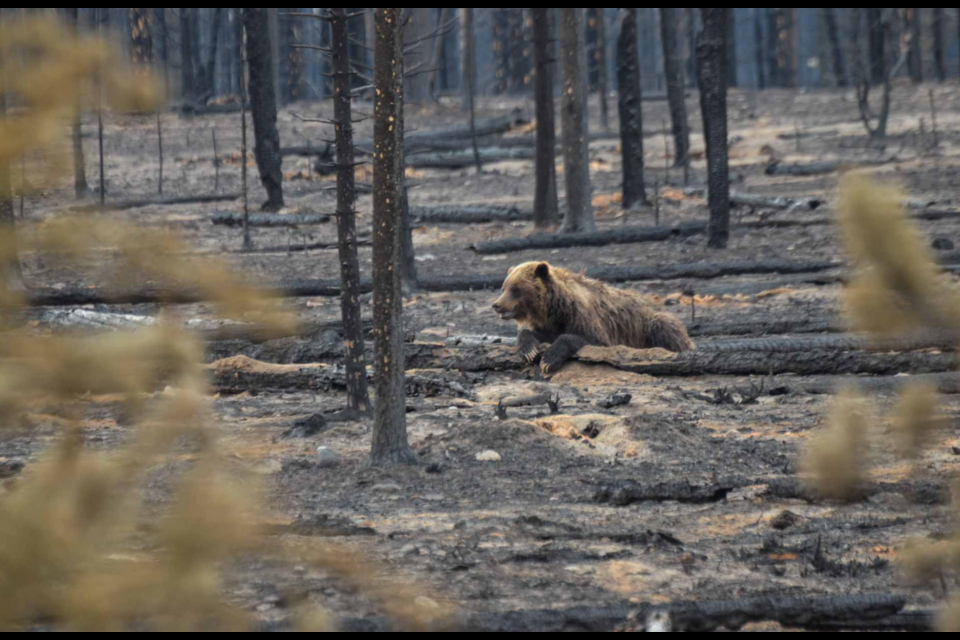JASPER – While about 30 per cent of the Jasper townsite has burned to the ground in a wildfire that ravaged through homes and businesses, a well-known local grizzly bear and her cubs have survived the destructive flames.
While some wildlife have perished as a result of the worst fire Jasper has experienced in 100 years, Parks Canada officials say the extraordinary instincts of wildlife like bears and elk guide them to safety when fire strikes, which is what bear 222, a frequent bear around the Jasper Park Lodge, did with her two cubs.
They say the mama bear, who is fitted with a GPS collar so her movements can be tracked, and her two cubs tucked themselves into a wet spot by the Athabasca River when a wall of flames, whipped by winds of up to 100-kms/h, raced toward the community on Wednesday (July 24).
James McCormick, human-wildlife coexistence specialist for Parks Canada, said bear 222 looks like a “very healthy” grizzly bear right now and has been eating a mix of berries and clover on the edge of the Jasper Park Lodge golf course.
“Fire is a natural process and we expect animals to find new places to live,” he said.
Bear 222 and her cubs were relocated out of Jasper in summer 2023 after she got into food at a busy picnic area.
However, she returned to the familiar stomping grounds of the townsite at the end of June this year and has been seen around the Jasper Park Lodge.
Earlier in the summer, the bear and her cubs forced evacuation and closure of two backcountry campgrounds at Coronet Creek and Fishermans’ Bay on June 7 after the bear family clawed at a tent.
McCormick said there is currently a team of 18 people managing wildlife in and around the town of Jasper.
“Because of all the fire and things that have been damaged, we’re looking at trying to manage garbage, food waste and spoiled food,” he said.
“We’re also out trying to look for any animals that were physically impacted by the fire and we have seen some that perished in the fire.”
Parks Canada and other incident staff are cleaning up human food and garbage exposed by the fire and evacuation and fire-fighting activities.
Bears can be extra aggressive when defending a significant food source, and McCormick said at least one grizzly has been spotted feeding on an animal carcass.
“One characteristic of a burned forest is that you can see quite a distance,” he said.
“We should have better opportunities to see if there are bears or a carcass in the area. “
McCormick said this wildfire will have lasting impacts on animals and their movements.
“Parks Canada will need to ensure this does not pose a risk before allowing residents to return,” he said.




